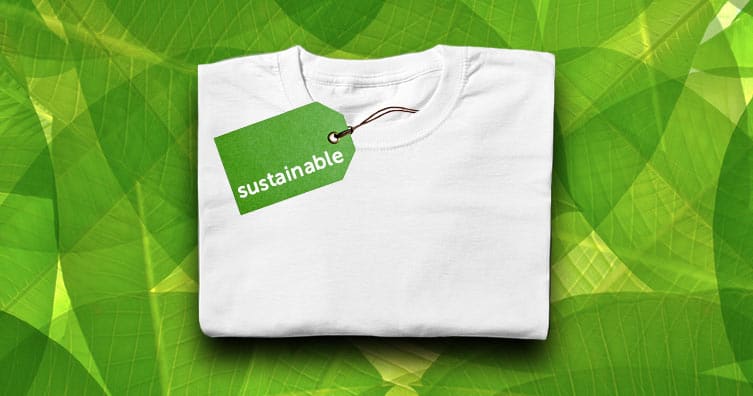Sustaining Local Cape Town Sustainable Fashion for a Greener Future
Sustaining Local Cape Town Sustainable Fashion for a Greener Future
Blog Article
Remain Ahead of the Curve by Exploring Innovative Style Patterns
In a market as dynamic as style, remaining ahead involves greater than simply adhering to present trends-- it demands an expedition of advancement. Smart textiles, for example, are changing garments right into practical masterpieces, while 3D printing is revolutionizing layout procedures with its adjustable, waste-reducing capabilities. As sustainability comes to be a foundation, advancements like green products and circular style practices are improving environmental responsibility - Cape Town Sustainable Fashion. Moreover, the convergence of technology and style declares a brand-new age of customer interaction. How, after that, can these emerging fads redefine the future of fashion, and what implications do they hold for brand names seeking to prosper in this developing landscape?

Accepting Smart Textiles
Recently, the garment industry has actually witnessed a transformative shift with the combination of wise fabrics, a sophisticated innovation that blends technology with fabric. This development represents not only a combination of looks and capability yet additionally a substantial jump in the direction of sustainability and customization in style. Smart textiles, likewise referred to as e-textiles, embed advanced electronics such as sensors and conductive strings within the textile, making it possible for garments to connect with the atmosphere or the wearer.
These textiles are designed to monitor physiological criteria, such as heart price or body temperature level, providing real-time health analytics. Beyond health applications, wise fabrics are additionally being made use of for adaptive garments, which can transform color or pattern in action to environmental stimuli, hence supplying a vibrant fashion experience.
Moreover, the growth of energy-harvesting fabrics that produce power from movement or sunlight is leading the means for self-sufficient wearable technology. This innovation is appealing to eco conscious customers and designers intending to decrease the ecological impact of fashion. As r & d in this area development, smart fabrics are expected to come to be progressively widespread, reshaping the landscape of modern-day fashion with their multifunctional capacities.
The Increase of 3D Printing
Transforming the production landscape, 3D printing has become a game-changer in the fashion market. This cutting-edge modern technology has made it possible for designers to press the boundaries of imagination, generating intricate and tailored garments that were previously unbelievable. By leveraging digital layout and additive manufacturing, 3D printing assists in the creation of complicated geometries and patterns, permitting designers to explore brand-new textures and structures.
A remarkable advantage of 3D printing in vogue is its capability to create on-demand, reducing waste and minimizing supply needs. This effectiveness not only optimizes production procedures yet also permits fast prototyping, making it possible for designers to bring their visions to life in a shorter timeframe. In addition, 3D printing sustains customization somewhat unrivaled by standard approaches, supplying personalized fits and distinct styles tailored to individual consumer preferences.
The increase of 3D printing has likewise equalized style, making it obtainable to arising designers who can currently make top quality pieces without substantial monetary investment in typical production facilities. As innovation remains to development, the garment industry is poised to harness the full possibility of 3D printing, checking out new materials and techniques that will unquestionably redefine exactly how fashion is conceived and produced.
Lasting Style Developments
As the fashion industry faces the pushing requirement for environmental responsibility, lasting style advancements have emerged at the center of transformative adjustment. The growing awareness of eco-friendly effect has fueled a shift in you can check here the direction of even more eco-conscious practices and products. Developers and brands are now focusing on sustainability, integrating methods that decrease waste and minimize carbon footprints.
One considerable development is the surge of circular fashion, which stresses recycling and upcycling to extend the lifecycle of garments. This technique not just lowers waste however additionally encourages consumers to take on a more mindful strategy to garments intake.
One more breakthrough exists in the adoption of cutting-edge dyeing techniques that use all-natural dyes or waterless processes, thus lowering the huge amounts of water and chemicals commonly utilized in textile dyeing. In addition, improvements in biotechnology have actually resulted in the creation of lab-grown leather and textiles, using cruelty-free and environmentally pleasant options to standard materials. Via these introducing efforts, the garment industry is making significant strides towards a more lasting future.

Tech-Integrated Garments
Tech-integrated apparel stands for an innovative blend of style and innovation, improving how individuals engage with their clothes. This cutting-edge domain is noted by the incorporation of clever fabrics and ingrained electronic elements, boosting both capability and visual charm. From health and fitness trackers installed in sports apparel to heated jackets managed through mobile phone apps, tech-integrated apparel offers consumers extraordinary comfort and flexibility.
Pioneering brand names are driving this fad, concentrating on developing garments that reply to ecological stimuli or individual commands. As an example, some garments can change color or pattern in response to temperature changes, while others include biometric sensing units to keep track of health metrics like heart rate or stress degrees. The smooth assimilation of innovation into textiles also includes ecological sustainability, with initiatives to establish self-cleaning fabrics or garments that get used to climate condition, therefore decreasing the demand for several layers.
Additionally, the development of wearable technology is not just limited to garments however includes devices like watches why not try this out and eyeglasses, more expanding the scope of tech-integrated style. As the market remains to introduce, the potential for modification and personalization in garments grows, offering customers unique, tech-enhanced style experiences that deal with their specific needs and choices.
Future of Virtual Fashion
Over the last few years, the future of virtual style has actually become a transformative pressure within the industry, leveraging innovations in digital modern technology to redefine exactly how style is created, experienced, and taken in. By integrating enhanced fact (AR), virtual truth (VIRTUAL REALITY), and 3D style devices, designers can now craft interactive and immersive experiences that transcend standard style limits. Digital fashion enables for the production of garments that exist solely in electronic settings, offering limitless opportunities for development without the constraints of physical manufacturing.
This digital shift not just offers opportunities for innovative expression yet also addresses sustainability issues intrinsic in typical fashion practices. Cape Town Sustainable Fashion. By getting rid of the demand for physical sources, virtual fashion decreases waste and lessens carbon impacts. Furthermore, the rise of online style straightens with the enhancing customer need for unique and individualized experiences, as virtual garments can be personalized and customized to private choices effortlessly

Conclusion
The fashion market's future lies Resources in the assimilation of lasting practices and innovative innovations. Online style is positioned to redefine customer communications.
In current years, the style industry has seen a transformative shift with the combination of wise fabrics, a sophisticated innovation that blends technology with material.As the fashion market grapples with the pressing requirement for environmental obligation, sustainable fashion developments have emerged at the forefront of transformative change.In recent years, the future of virtual style has actually arised as a transformative pressure within the sector, leveraging innovations in electronic innovation to redefine exactly how fashion is produced, experienced, and taken in. The rise of virtual style aligns with the increasing customer need for special and individualized experiences, as online garments can be personalized and tailored to specific choices with simplicity.
The fashion industry's future lies in the assimilation of cutting-edge modern technologies and sustainable methods.
Report this page